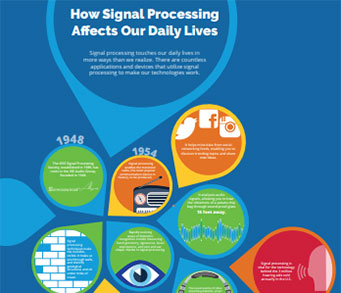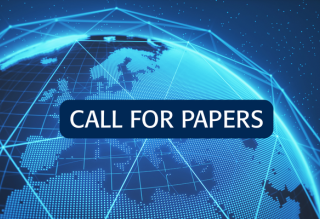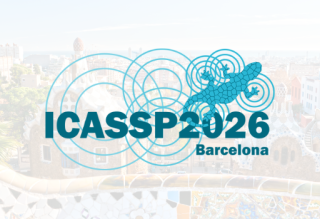- Our Story
- Publications & Resources
- Publications & Resources
- Publications
- IEEE Signal Processing Magazine
- IEEE Journal of Selected Topics in Signal Processing
- IEEE Signal Processing Letters
- IEEE Transactions on Computational Imaging
- IEEE Transactions on Image Processing
- IEEE Transactions on Information Forensics and Security
- IEEE Transactions on Multimedia
- IEEE Transactions on Signal and Information Processing over Networks
- IEEE Transactions on Signal Processing
- IEEE TCI
- IEEE TSIPN
- Data & Challenges
- Submit Manuscript
- Guidelines
- Information for Authors
- Special Issue Deadlines
- Overview Articles
- Top Accessed Articles
- SPS Newsletter
- SigPort
- SPS Resource Center
- Publications FAQ
- Blog
- News
- Dataset Papers
- Conferences & Events
- Community & Involvement
- Professional Development
- For Volunteers
- Information for Authors-OJSP
-
Home
Conferences Events IEEE Signal Processing Magazine IEEE SPL Article IEEE TIFS Article IEEE TMM Article IEEE TSP Article Jobs in Signal Processing Lectures Machine Learning Seasonal Schools Signal Processing News SPM Article SPS Distinguished Lectures SPS Newsletter Article SPS Webinar SPS Webinars SPS Webinar Series Webinar webinars
-
Our Story
What is Signal Processing?

The technology we use, and even rely on, in our everyday lives –computers, radios, video, cell phones – is enabled by signal processing. Learn More » -
Publications & Resources
-
SPS Resources
- Signal Processing Magazine The premier publication of the society.
- SPS Newsletter Monthly updates in Signal Processing
- SPS Resource Center Online library of tutorials, lectures, and presentations.
- SigPort Online repository for reports, papers, and more.
- SPS Feed The latest news, events, and more from the world of Signal Processing.
-
SPS Resources
-
Conferences & Events
-
Community & Involvement
-
Membership
- Join SPS The IEEE Signal Processing Magazine, Conference, Discounts, Awards, Collaborations, and more!
- Chapter Locator Find your local chapter and connect with fellow industry professionals, academics and students
- Women in Signal Processing Networking and engagement opportunities for women across signal processing disciplines
- Students Scholarships, conference discounts, travel grants, SP Cup, VIP Cup, 5-MICC
- Young Professionals Career development opportunities, networking
- Get Involved
-
Technical Committees
- Applied Signal Processing Systems
- Audio and Acoustic Signal Processing
- Bio Imaging and Signal Processing
- Computational Imaging
- Image Video and Multidimensional Signal Processing
- Information Forensics and Security
- Machine Learning for Signal Processing
- Multimedia Signal Processing
- Sensor Array and Multichannel
- Signal Processing for Communication and Networking
- Signal Processing Theory and Methods
- Speech and Language Processing
- Technical Working Groups
- More TC Resources
-
Membership
-
Professional Development
-
Professional Development
- Signal Processing Mentorship Academy (SigMA) Program
- Micro Mentoring Experience Program (MiME)
- Distinguished Lecturer Program
- Distinguished Lecturers
- Distinguished Lecturer Nominations
- Past Lecturers
- Distinguished Industry Speaker Program
- Distinguished Industry Speakers
- Distinguished Industry Speaker Nominations
- Industry Resources
- IEEE Training Materials
- Jobs in Signal Processing: IEEE Job Site
-
Career Resources
- SPS Education Program Educational content in signal processing and related fields.
- Distinguished Lecturer Program Chapters have access to educators and authors in the fields of Signal Processing
- Job Opportunities Signal Processing and Technical Committee specific job opportunities
- Job Submission Form Employers may submit opportunities in the area of Signal Processing.
-
Professional Development
-
For Volunteers
-
For Board & Committee Members
- Board Agenda/Minutes* Agendas, minutes and supporting documentation for Board and Committee Members
- SPS Directory* Directory of volunteers, society and division directory for Board and Committee Members.
- Membership Development Reports* Insight into the Society’s month-over-month and year-over-year growths and declines for Board and Committee Members
-
For Board & Committee Members
Popular Pages
Today's:
- Submit Your Papers for ICASSP 2026!
- Information for Authors
- (ICME 2026) 2026 IEEE International Conference on Multimedia and Expo
- Conferences & Events
- (ICIP 2025) 2025 IEEE International Conference on Image Processing
- (ASRU 2025) 2025 IEEE Automatic Speech Recognition and Understanding Workshop
- Board of Governors
- (CAI 2026) IEEE Conference on Artificial Intelligence 2026
- Inside Signal Processing Newsletter
- Video & Image Processing Cup
- Access Restricted
- Call for Proposals: IEEE MLSP 2026
- IEEE JSTSP Special Issue on Advanced AI and Signal Processing for Low-Altitude Wireless Networks
- Industry Board
- Editorial Board
All time:
- Information for Authors
- Submit a Manuscript
- IEEE Transactions on Image Processing
- IEEE Transactions on Information Forensics and Security
- IEEE Transactions on Multimedia
- IEEE Transactions on Audio, Speech and Language Processing
- IEEE Signal Processing Letters
- IEEE Transactions on Signal Processing
- Conferences & Events
- IEEE Journal of Selected Topics in Signal Processing
- Information for Authors-SPL
- Conference Call for Papers
- Signal Processing 101
- IEEE Signal Processing Magazine
- Guidelines
Last viewed:
- Information for Authors
- (ICME 2025) 2025 IEEE International Conference on Multimedia and Expo
- Signal Processing 101
- Inside Signal Processing Newsletter
- (ASRU 2025) 2025 IEEE Automatic Speech Recognition and Understanding Workshop
- (IC3D 2020) 2020 International Conference on 3D Immersion
- IEEE Transactions on Audio, Speech and Language Processing
- (DSP 2025) 2025 International Conference on Digital Signal Processing
- Jobs in Signal Processing
- (ICME 2026) 2026 IEEE International Conference on Multimedia and Expo
- Unified EDICS
- Editorial Board
- Board of Governors
- 2022 IEEE SPS Cycle 1 School on 2022 IEEE SPS Seasonal School on Data and Graph Driven Learning for Communications and Signal Processing
- Introduction to the Special Issue on Array Signal Processing for Angular Models in Massive MIMO Communications
Top Reasons to Join SPS Today!
1. IEEE Signal Processing Magazine
2. Signal Processing Digital Library*
3. Inside Signal Processing Newsletter
4. SPS Resource Center
5. Career advancement & recognition
6. Discounts on conferences and publications
7. Professional networking
8. Communities for students, young professionals, and women
9. Volunteer opportunities
10. Coming soon! PDH/CEU credits
Click here to learn more.
The Latest News, Articles, and Events in Signal Processing
Date: 02-December-2025
Time: 9:00 AM ET (New York Time)
Presenter: Dr. André L. F. de Almeida
Date: 18-December-2025
Time: 10:00 AM ET (New York Time)
Presenter: Dr. Luca Barbieri
Date: 06-November-2025
Time: 08:00 AM ET (New York Time)
Presenters: Dr. Juan Tapia & Dr. Daniel Benalcazar
Date: 07-November-2025
Time: 08:00 AM ET (New York Time)
Presenters: Mr. Alexander Karataev, Mr. Christian Forsch & Dr. Laura Cottatellucci
Based on the IEEE Xplore® article under the same title
Published: IEEE Open Journal of Signal Processing, January 2024.
Date: 05-November-2025
Time: 10:30 AM ET (New York Time)
Presenter: Dr. Ana Perez-Neira
Date: 28-October-2025
Time: 1:30 PM ET (New York Time)
Presenter: Dr. Katherine L. (Katie) Bouman
Date: 20-October-2025
Time: 09:00 AM ET (New York Time)
Presenter: Dr. Yuyao Zhang
Based on the IEEE Xplore® article under the same title
Published: IEEE Transactions on Computational Imaging, June 2023.
Date: 22 October 2025
Time: 07:30 AM ET (New York Time)
Presenters: Dr. Ercan E. Kuruoğlu
The Signal Processing Magazine explores wavelengths for computing over the air, power-efficient, power-efficient sampling, society news and more.
The IEEE Signal Processing Society (SPS) invites proposals to host the 2027 IEEE International Conference on Artificial Intelligence (CAI).
Proposal Pre-Screening Form due Wednesday, 1 October 2025
Call for Project Proposals for the Signal Processing Mentorship Academy (SigMA) Program. The application deadline is 2 November 2025.
Recognize a Chapter for its educational programming, membership development, and technical activities.
The Nominations and Appointments Subcommittee of each Technical Committee is currently accepting nominations for new Members, and where applicable, the Vice Chair position. Nominations should be submitted directly to the respective Technical Committee’s Nominations and Appointments Subcommittee by 15 September 2025.
The Call for Papers for hashtagICASSP 2026 is now open. Have your work seen at one of the industry's most prestigious conferences.
The IEEE SPS SigMA (Signal Processing Mentorship Academy) Steering Committee will soon launch the fourth installment of its mentoring program for young IEEE SPS researchers and would like to invite you to join as research mentors.
Participate in the 2025 Low-Resource Audio Codec (LRAC) Challenge, an exciting opportunity to advance the state-of-the-art in neural audio coding for resource-constrained devices.
The Signal Processing Society (SPS) has 12 Technical Committees that support a broad selection of signal processing-related activities defined by the scope of the Society.
Pages
SPS Social Media
- IEEE SPS Facebook Page https://www.facebook.com/ieeeSPS
- IEEE SPS X Page https://x.com/IEEEsps
- IEEE SPS Instagram Page https://www.instagram.com/ieeesps/?hl=en
- IEEE SPS LinkedIn Page https://www.linkedin.com/company/ieeesps/
- IEEE SPS YouTube Channel https://www.youtube.com/ieeeSPS
Home | Sitemap | Contact | Accessibility | Nondiscrimination Policy | IEEE Ethics Reporting | IEEE Privacy Policy | Terms | Feedback
© Copyright 2025 IEEE - All rights reserved. Use of this website signifies your agreement to the IEEE Terms and Conditions.
A public charity, IEEE is the world's largest technical professional organization dedicated to advancing technology for the benefit of humanity.






















